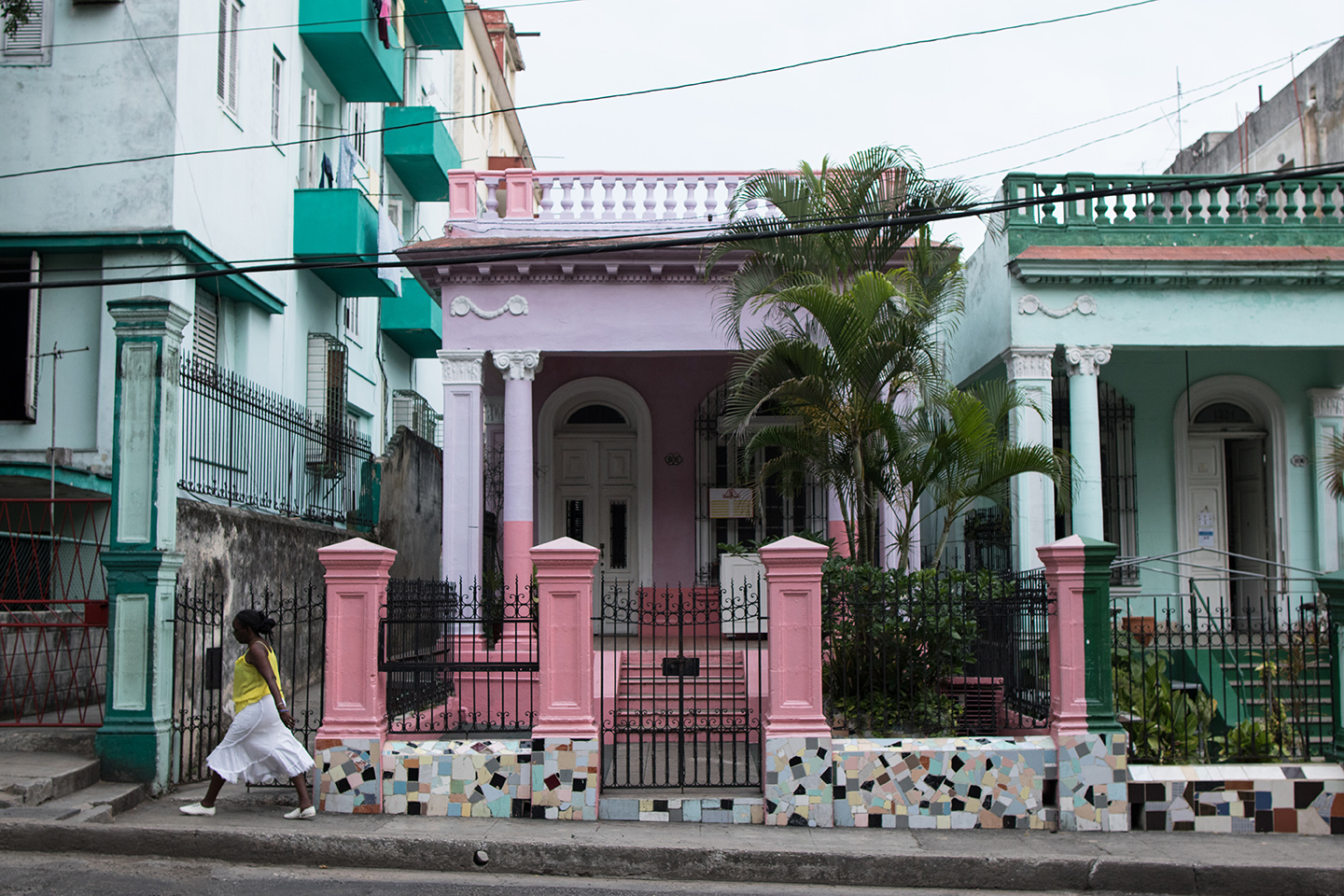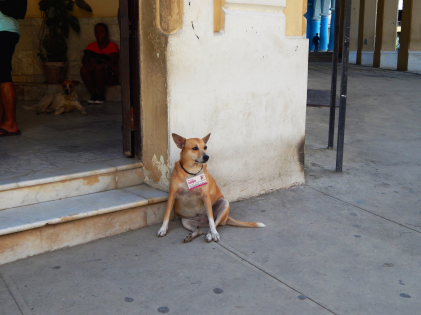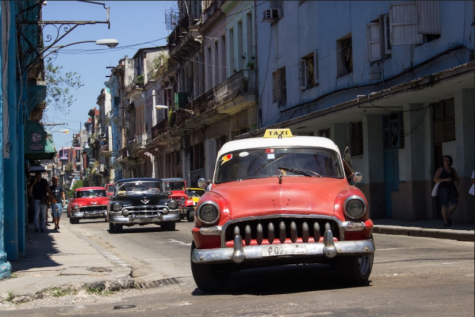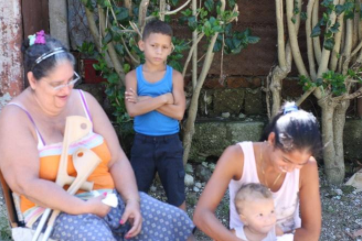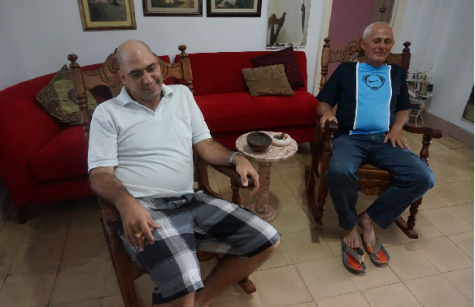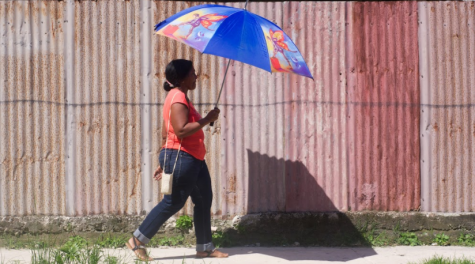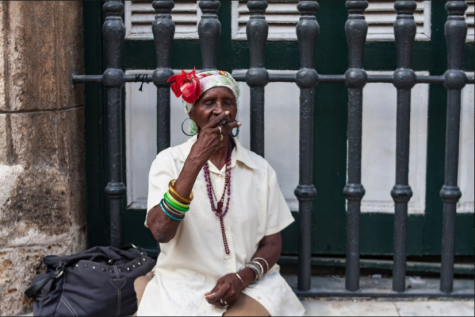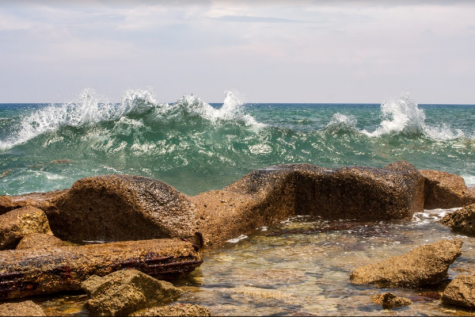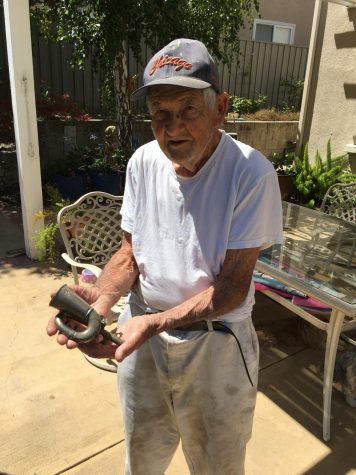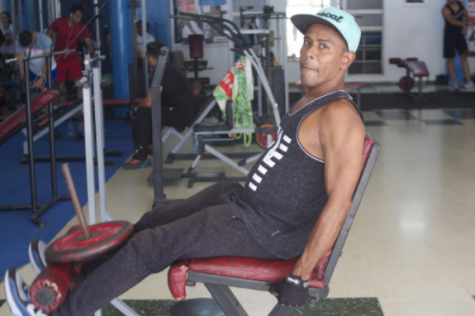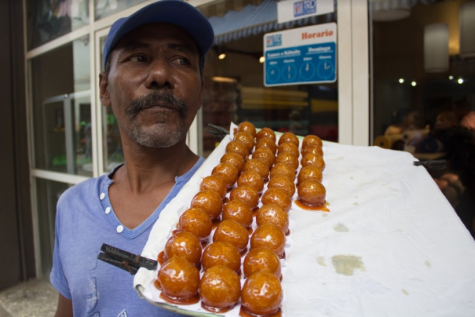Havana’s unique architecture and efforts to preserve it
August 28, 2017
Walking through the streets of Havana is like walking through a nirvana of color, smells, culture and history. Roaming the narrow hallways, tourists enter small shops filled with the same souvenirs they’ve seen all over the city. Locals look out over the city squares from their balconies as groups of friends sit down for a cup of coffee at the Cafe El Escorial. As they enjoy each other’s company they admire the vibrant, colorful buildings that surround them.
Havana is home to some of the most unique architecture in the world. The earliest architecture in Havana reflects medieval Spanish style, but Havana has gone through many architectural renaissances over time. There are hints of early Spanish, Greek, Italian, and Roman styles scattered all over the city. These influences have all made Havana into the diverse place it is today. Yoani, a student at The University of Havana, says she loves the uniqueness of her city. “I’m very proud of Habana, and its history,” she says.
The years of influences are seen in the buildings that lie perpendicular to one of the most populated areas of Havana, the Malecón, or sea wall. The Malecón spans five miles along the coast of Havana, and is one of the busiest streets in Havana, according to Lonely Planet Cuba. On the opposite side of the Malecón lies a hodgepodge of varied buildings. A row of lofty, pastel colored complexes reflects off the passing 1952 Chevrolet filled with beaming tourists. Next door, a guard patrols a building, which crumbles, from the persistent harsh weather. Paint peels off in fragments, the rough texture echoing years of wear. On a smaller, similarly worn building, ‘Viva la revolución’ is displayed boldly in spray paint on a metal door. As the sun goes down, the streets begin to fill. Tired after a long, hot day, hundreds of people congregate at the Malecón to socialize and relax. Rather than look out at the horizon, people turn in towards the city. Street musicians cruise along the wall, playing guitars and drums for onlookers, the sound floating along through the crowds. By the curb, people try and negotiate prices with a taxi driver, hoping to get a ride into Old Havana.
Although the Malecón is only a short drive from Old Havana, the ambiance is vastly different. Whereas the Malecón is a place for peace, walking through Old Havana is similar to walking through Disneyland. Each area of the city has its own unique style. Old Havana has five different squares, the Plaza de Armas, Plaza Vieja, Plaza de San Francisco, Plaza del Cristo and Plaza de la Catedral, which all offer something new and exciting to see and do. The Plaza Vieja always has an air of musical melodies and culture. If someone wants to have a fun night out, where they can socialize and enjoy a performance or two, the Plaza Vieja is the perfect place. To gain an appreciation for daily Cuban life, look no further than the Plaza de la Catedral, where groups of young boys in jerseys play fútbol for hours, laughing and roughhousing.
Buildings loom high from both sides of narrow streets. Clothes hang from apartment railings. Locals stare from their balconies at passing tourists. The contrast in the colors of shops and apartments is glaring. Some buildings are completely barren, no colors or signs to distinguish between them. Other buildings have stained glass windows with intricate circular designs and bright blue window-panes which stand out against the stark white walls. The striped yellow awnings of the Casa del Café inspire feelings of comfort, inviting patrons in for a coffee.
Old Havana even has a plethora of different smells, some extremely pleasant, and some revolting. The smell of chocolate comes from the open shop door, and then ten paces later the smell of trash invades the senses. The Catedral de la Habana smells of cool, stale air, a pleasant reprieve from the blistering sun outside. The aroma of ice cream wafts from Helad’oro, tempting those passing by, and tormenting those who are already waiting in line. All of these scents are made infinitely stronger due to the close proximity of the buildings.
Local artists also lend their talents to beautify the city. Street artists paint intricately detailed designs on walls, which were previously wearing away. One doesn’t have to pay to go to an art gallery when they can just stroll along the streets of Old Havana to enjoy a taste of art and culture.
Art can also be used as a way to repair worn-down architecture. 11 miles west of Old Havana, in the Jaimanitas district, lies Fusterlandia, a wonderland of color. Walking through Fusterlandia is like walking through a painting. In 1992, Cuban ceramist José Fuster decided to make his home into an elaborate piece of art. He completely covered his home, what is now referred to as the Taller-Estudio José Fuster, from foundation to the roof, in mosaic tiles. His house is now the centerpiece of Fusterlandia. Fusterlandia is a playground, with swirling staircases to climb, maze-like walkways to explore, and rooftop terraces to overlook an empire of artistic invention. The uneven texture and intricate detail of the walls make it difficult to resist touching. Sculptures, depicting people and animals, tower high, emphasizing the overwhelming surrealism of the scene. Each piece of art depicts something whimsical, adding to the mystique and intrigue. Fuster’s style is almost childlike; random, bold and without concrete structure. It’s difficult to focus on one piece of art in Fusterlandia because suddenly something else will catch the eye.
Fuster’s home was only the beginning of Fusterlandia. Fuster revealed to the Huffington Post that he began the project as a way to blend his fantasy with real life, and it took off from there. As if Fuster couldn’t stop his artistic juices from flowing, his project began to spread throughout the neighborhood. According to Lonely Planet Cuba, over half of the houses in Jaimanitas, with permission from the owners, are now a part of Fusterlandia. What began as Fuster’s personal project is now a community effort. Neighbors, friends, and guests have lent their own creativity to the task. The entrance to Fusterlandia is bracketed by walls filled with paintings from contributors and feels like walking through an art gallery. Murals depicting Cuban culture and history adorn the wall by the tile-covered bus stop. Even the street signs are their own pieces of art. Fuster has no plans to stop, and continues to look for inspiration and collect materials to expand Fusterlandia, he revealed to The Huffington Post.
Fusterlandia is not only a hub of artistic expression but also an innovator in architectural fortification. Underneath the mosaic art, the paint may be peeling, but the abundance of new art has made Jaimanitas a place of pride for the Cuban people. “Not many people can say they grew up in a place like this,” says Alicia, who has lived in Jaimanitas her whole life. “I enjoy seeing the looks on people’s faces when they first see it.”
Fortification efforts are in effect all over Havana. Due to the lack of funds for maintenance, the overall layout of Old Havana has remained virtually unchanged, but efforts are mainly placed in preserving the current structures. Old Havana is one of the nine Cuban sites protected by UNESCO, the United Nations Educational, Scientific and Cultural Organization. UNESCO, according to their website, makes sure that historical sites are preserved in order to protect its historical and cultural value, through their sustainable development initiative. This goes hand in hand with Havana’s fortification system, in which the Constitution of the Republic of Cuba has laws in place to protect the property owned by the Cuban state. Another group working towards the preservation of Cuban architecture is the National Monuments Commission Resolutions, which is responsible for protecting the buildings in Old Havana from demolition.
Old Havana’s monuments are safe due to the protection from UNESCO, but fortification is still a work in progress for Cuban citizens. Havana has an array of beautiful mansions, but there are also dilapidated homes that require a tremendous amount of maintenance. Buildings that were once sturdy extravagant have been reduced to nothing but piles of rubble, due to tropical storms in the region. Ceilings are caved-in, water leaks through cracked pipes, doors are missing from their hinges, leaving the homes open to the formidable weather conditions. “Unfortunately, we don’t have the [resources] to fix our house, but this where we live, and we have to deal with it,” says Javier, a local, who lives in an apartment on Calle Línea (Línea street) in Havana.
With the help of organizations such as UNESCO and the influx of tourists from the United States, there is a lot of hope for maintaining Cuban architecture. If more tourists who experience Havana go back home having embraced the unique architecture, there will be infinitely more chances to preserve them. The buildings in Havana go back hundreds of years. There is so much history trapped inside those crumbling walls. They house stories that have long since been forgotten. To preserve the architecture and homes of the Cuban people is to serve humanity.




